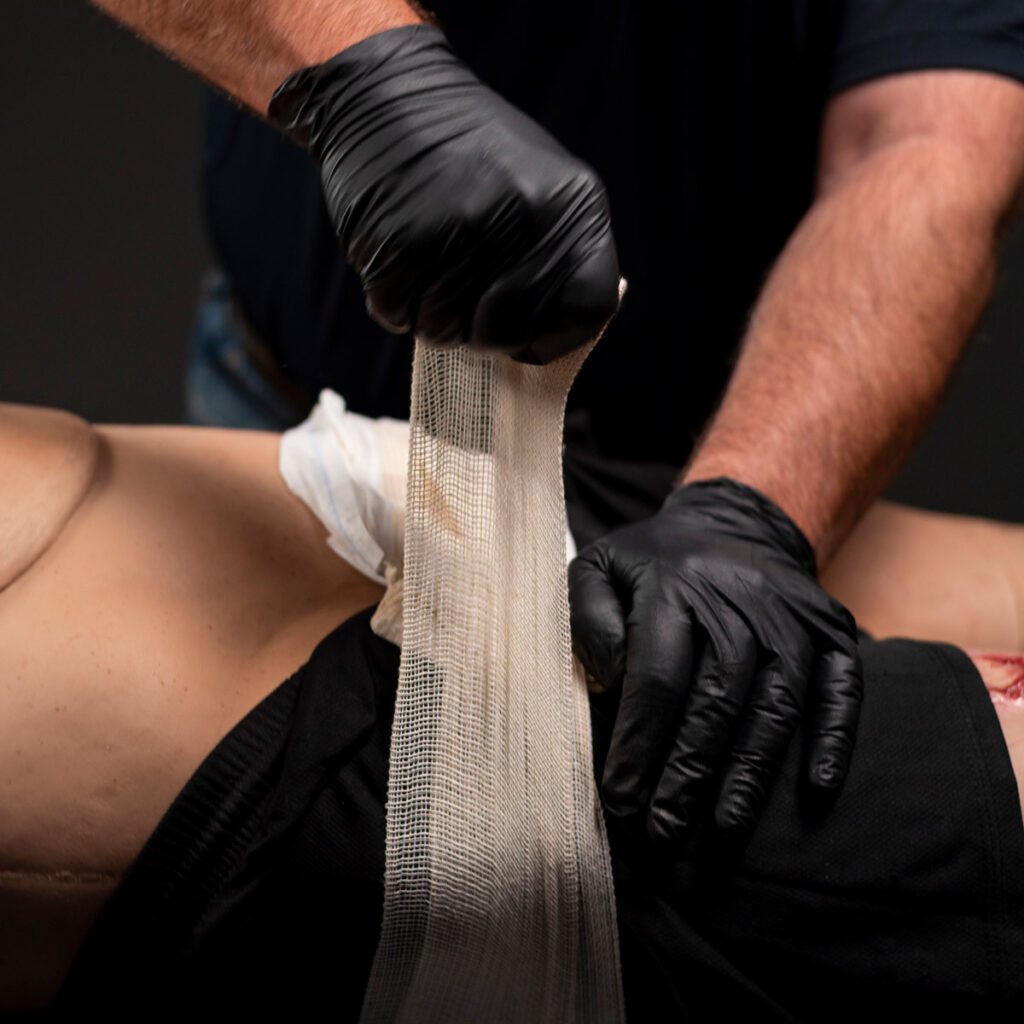If You Don’t Already Know, Here’s the Theory on Pressure Dressings:

If you have a good understanding on how to use your gear, it frees you up to think outside the box and come up with solutions to problems you might face in an emergency.
Everyone wants to be that person who saves the day, calm, cool, and collected while the world goes to hell around them. It’s an admirable trait and one anyone can cultivate with a little practice.
Part of that journey includes having a good understanding of your gear. If you know how to use what you’ve got, your effectiveness and efficiency (both essential for saving lives) skyrocket.
Here’s a brief run-down of what a pressure dressing is and why you need one (or a dozen) in your trauma kit:
Pressure dressings are elastic and normally have an absorbent pad which is placed over the wound site. The stretchy material provides circumferential compression when wrapped and pulls the pad down tight to increase direct pressure and help control bleeding.
Extremities
Pressure dressings are great for treating mild to moderate bleeds on the arms and legs. If the bleeding is so severe you’re worried the victim will die, don’t bother with the pressure dressing. Just go straight to the tourniquet (TQ), it’s the most efficient and best choice.
If the level of bleeding is not concerning and you feel the wound can be properly controlled with a pressure dressing, use it instead. Don’t wrap too tightly. The dressing should be snug, but not cut off all blood supply to the arm or leg like a TQ would.
Be sure to closely observe the bandage to ensure bleeding is controlled. If you see blood seeping through the bandage, bleeding has not been controlled and you should immediately upgrade to a tourniquet placed above the pressure dressing.
Junctional Wounds
Junctional wounds however, (wounds to the armpits, groin, or neck) can’t be controlled with a TQ. Knowing how to pack a deep wound with gauze is an essential skill and can be learned quickly. This is where most of the bleeding control comes from.
The pressure dressing acts to keep the gauze packed in tight around the severed artery and maintain control of the bleed. Without a pressure dressing to assist, you’re stuck holding the gauze in place until EMS can arrive to take over.
If I’m confident I’ve controlled ALL life-threatening bleeding with the application of a tourniquet, I may decide to wrap the wound in a pressure dressing to keep it clean and add an additional layer of bleeding control in the event there’s a problem with the TQ.
However, since bleeding should be adequately controlled with the proper application of a TQ, I would ONLY do this if:
- Time and the situation allow.
- I’m certain I don’t have other casualties that might need that resource.
- I’m unlikely to receive more casualties before I can restock my kit.
The Wrap Up
Those of you who are experienced will know that I’m leaving out an important use: converting a TQ to a pressure dressing if casualty evacuation is likely to be delayed past the point advisable for leaving said TQ secured.
This is an attempt to reduce the chance of the limb being amputated and is dangerous for the casualty, even if done correctly, so it shouldn’t be attempted unless you’ve been properly trained, and the situation calls for it.
I decided not to get into it because you probably won’t need this technique since most Americans have access to rapid transport to surgical centers and it will require more discussion than I have time for here.
Come back next week where I'll be talking about a head to head with the two most popular pressure dressings on the market, the OLAES Modular Pressure Bandage vs. the Israeli Style Pressure bandage. One is better than the other in my opinion, but I'll leave that up to you to decide.
If you’re interested in how to convert a tourniquet to a pressure dressing, leave a comment below and I’ll go over it.
If you'd like to purchase some pressure dressings for yourself, click here.
